When the Malta Railway was built through Attard it had to deal with the Knight’s era Wignacourt Aqueduct descending on a slight gradient through the landscape just to the west of the station. Here, the railway needed to be cut into the rock to create its own gentle ascent towards Mdina. There would come a point where the two lines of infrastructure clashed with each other.
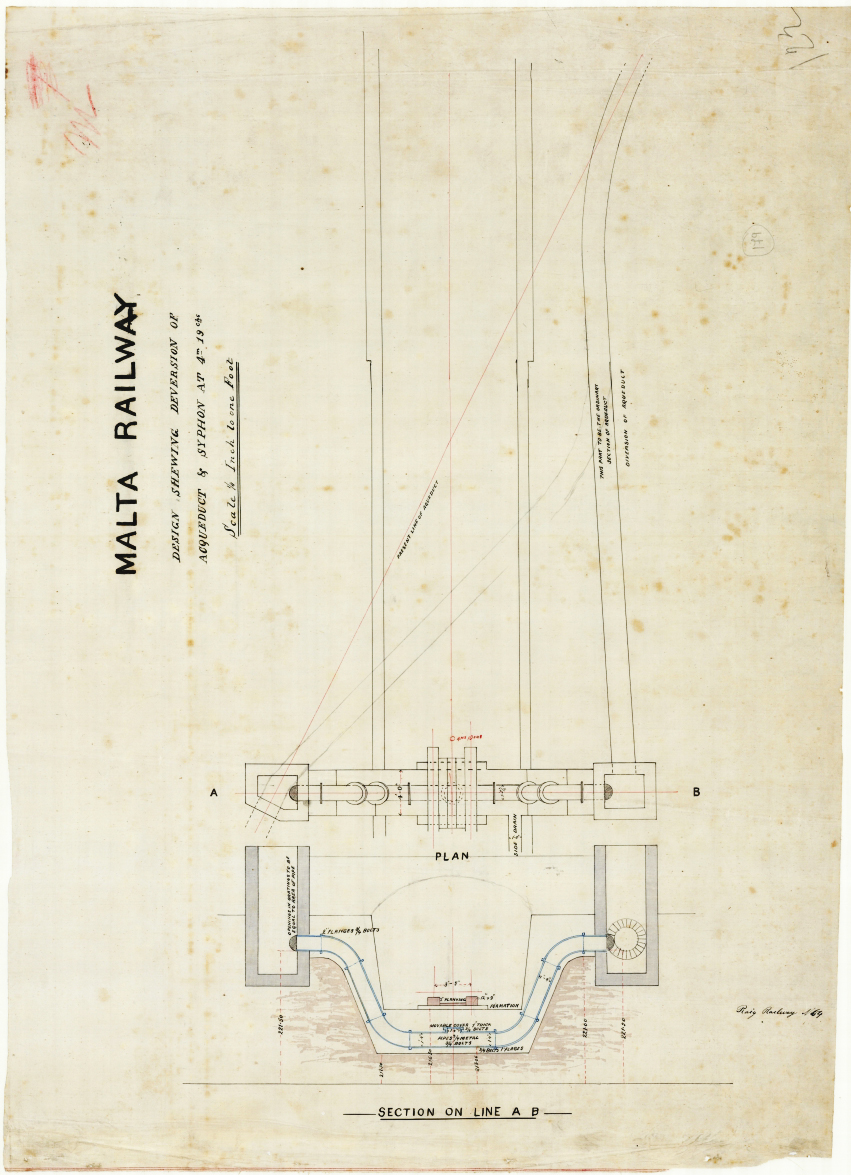
To ensure the important water supply was maintained, the railway had to divert the ancient aqueduct using more modern techniques. It was, of course, impossible to impel the water upwards to pass over the railway, so it had to pass under it, below the level of the deep cutting through which it was to pass.
A clever iron pipe was designed to route the water syphonically from one side of the track to the other; the drawing survives in the National Archives of Malta. The diversion included a short deviation from the aqueduct’s original course along the north side of the cutting before taking a direct alignment for its piped section before feeding directly back into the original course on the other side.
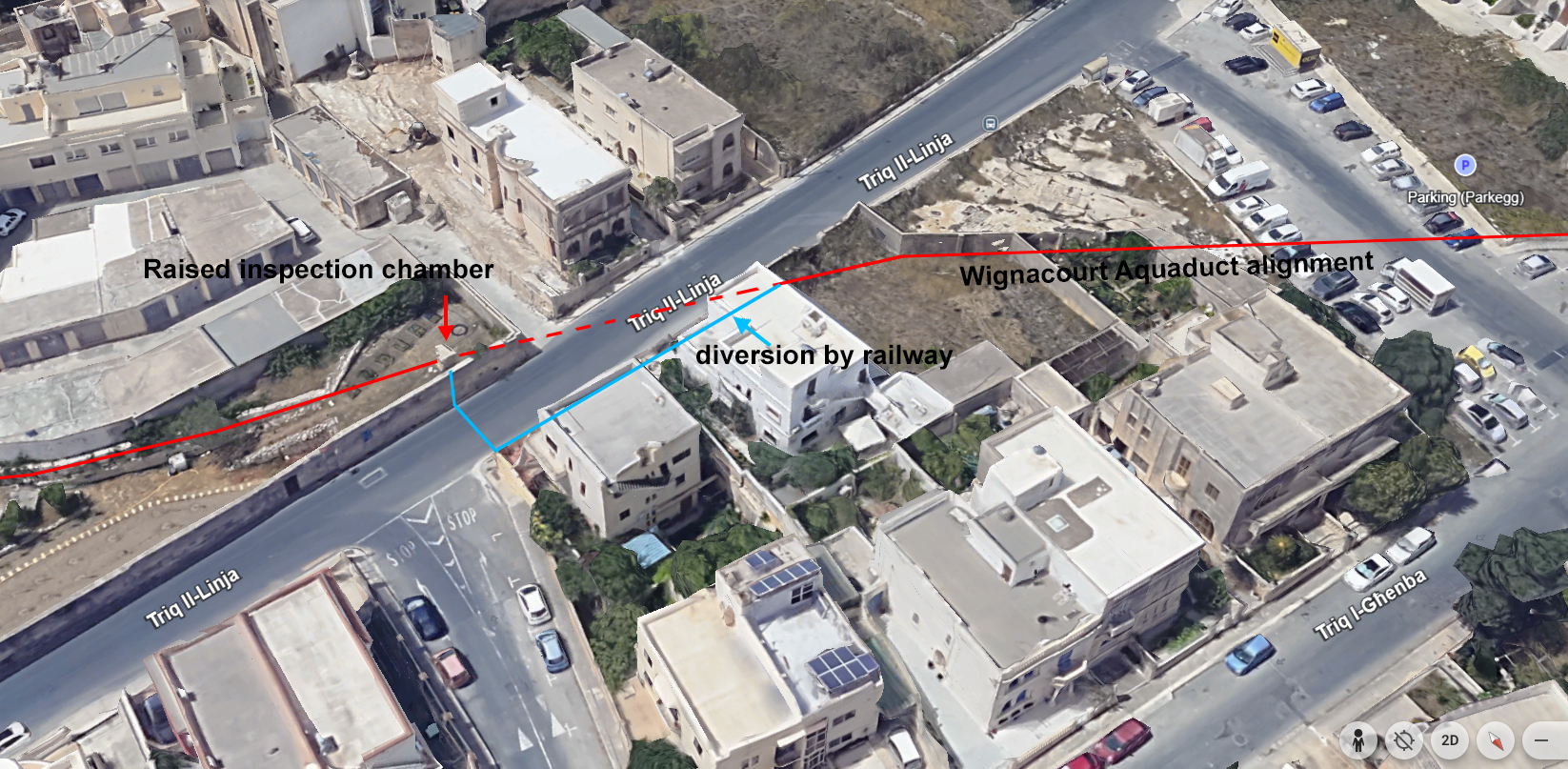
Today, Triq Il-Linja replaces the railway line and the north side of the old cutting has been removed and opened-out, but the south face survives where the syphonic pipe once crossed. A blocked inspection opening can still be seen in the side of the rockface and in the field above it a short stone tower can just be seen. This is another forgotten piece of railway infrastructure: the protective chamber that contained a silt trap and inspection chamber. It’s not rectangular in plan, but an irregular pentagon, the same as it was drawn in 1883. It has a door in the western side and the odd angled western side is aligned with the continuation of the original aqueduct on its onward journey towards Valletta.
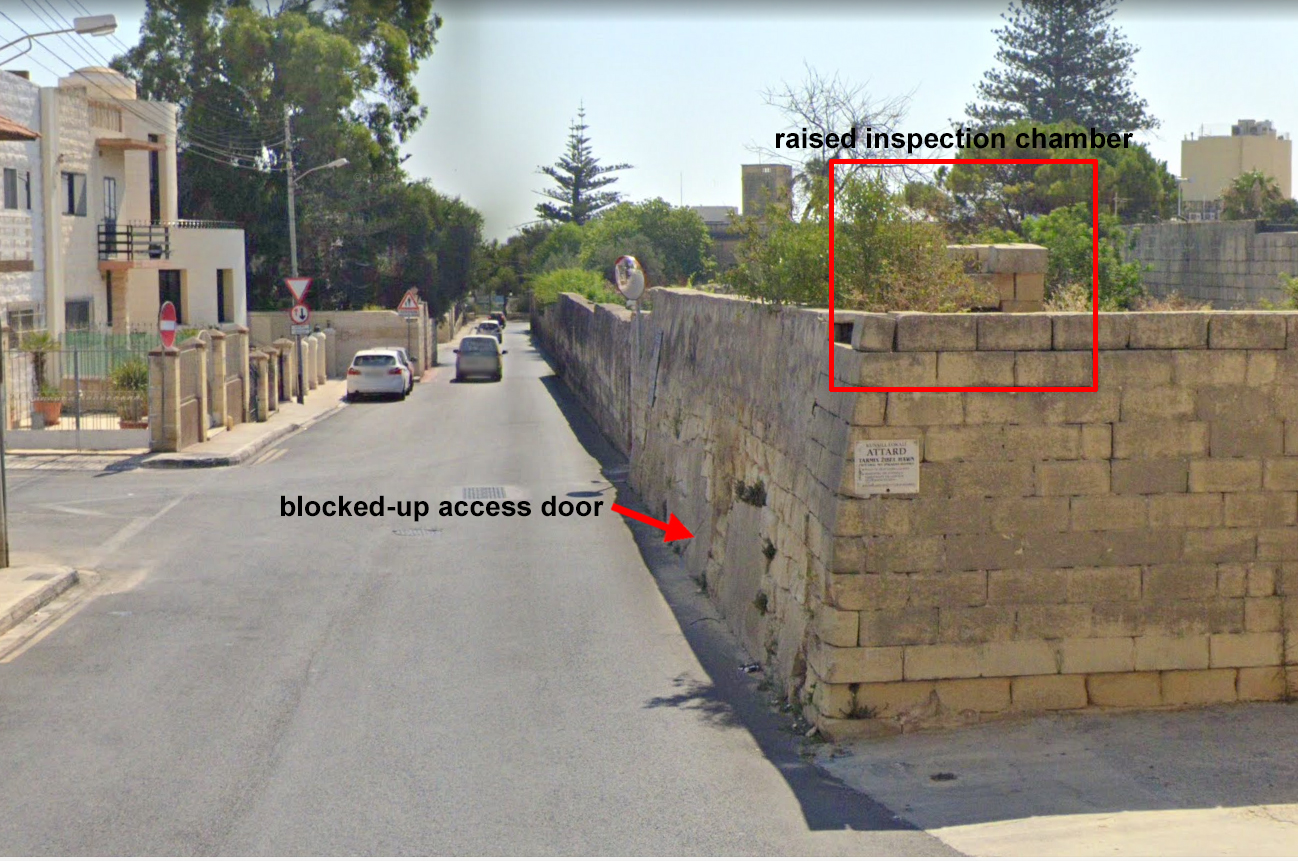
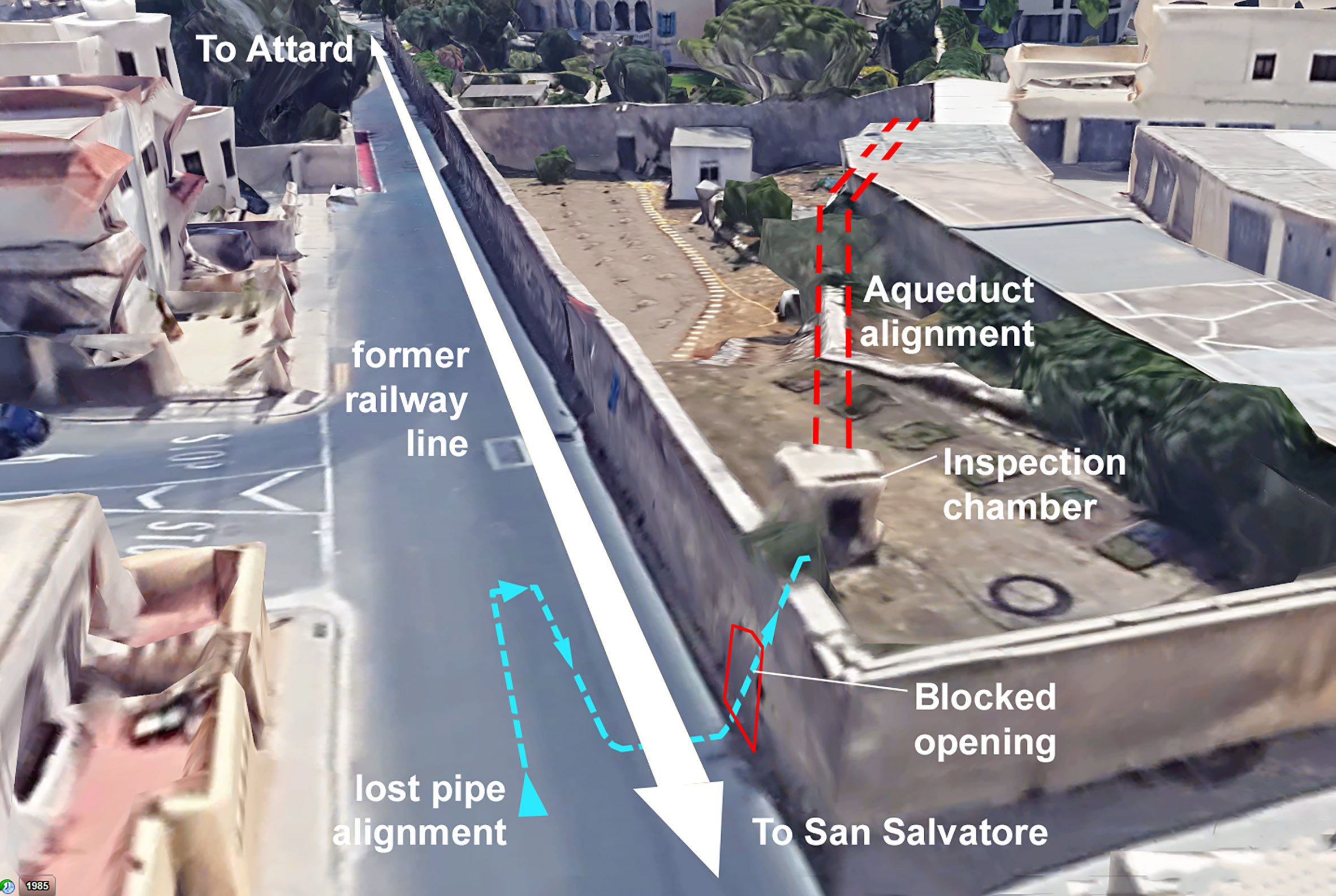
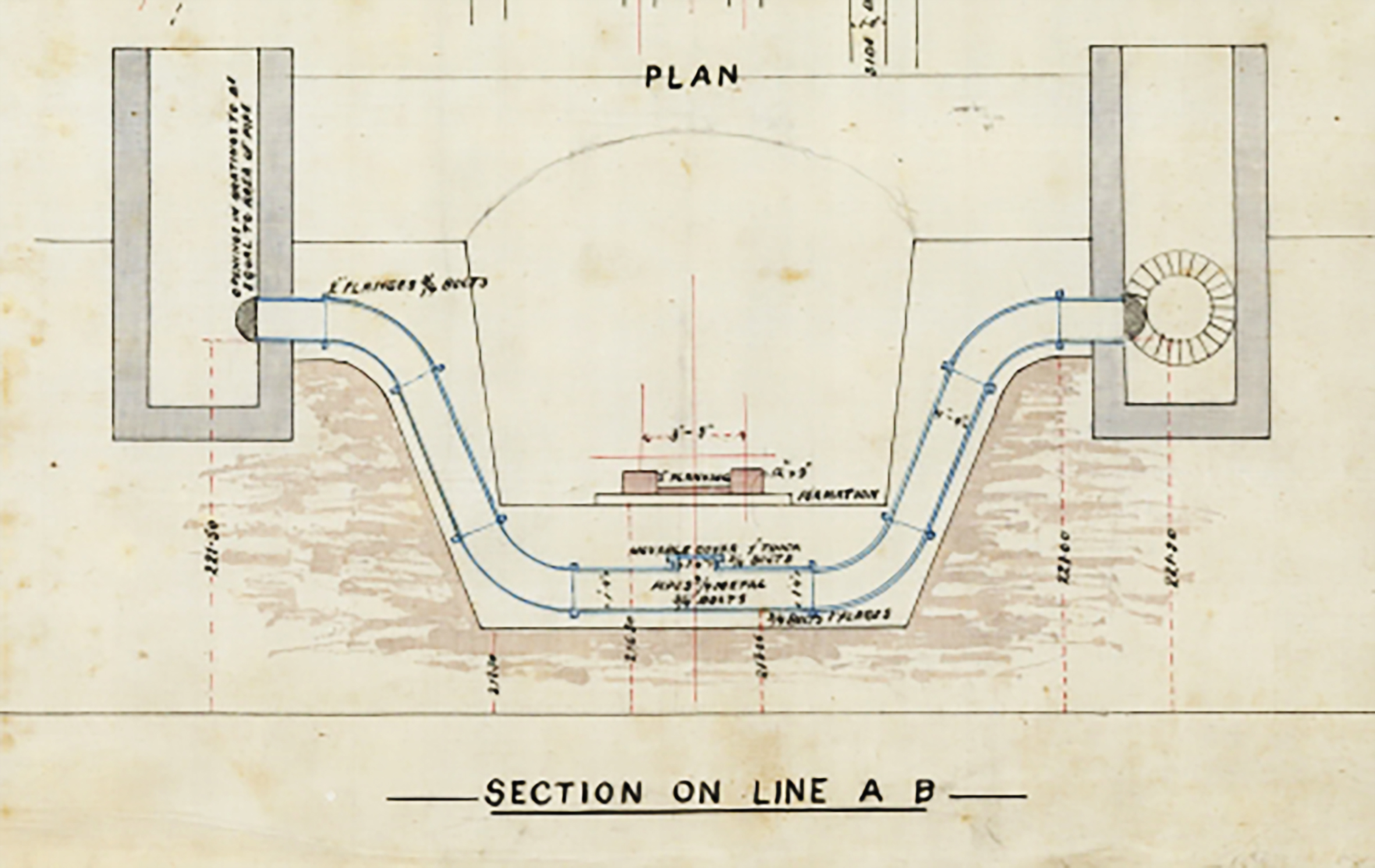

No responses yet